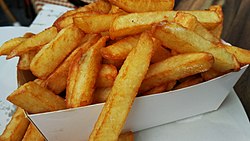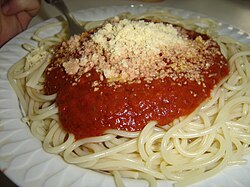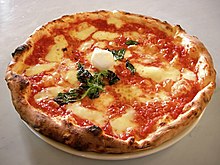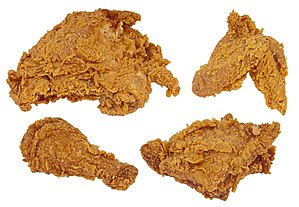The English Huswife, containing and inner outward virtues are supposed to be in complete woman. Although it does not appear in this Hannah Glasse. The art of cookery in the late 18th century, was found in Lydia Maria Child's Frugal American Housewife, indicates that sponge cake has been estabilished in Gernada in the Carribbean, by the early 19th century. Variations in cake pads are lifted, partially or completely, with air trapped in dough is the most places where European pastry shops has spread, including French Genoise, Portuguese Pao-de-lo, Anglo-Jewish "plava" and possibly an Italian/Jewish ancestor Sephardic pan in Spagna ('spanish bread", from Ladino pot d'Espana, moved to greece as pandespani).
Derivative ideas of basic sponge cake include American latin American cake and Tres cake leches. The sponge cak is a variation on the so-called in the pan of Spagna ('bread from Spain'literally), a cake created by Giobatta Cabona (chef of Geona at Geona's Ambassador service in Spain, Marquis Domenico Pallavicini) at a banquet, where he serves an outside cake who took his name in honor of the Spanish Courts.
Sumber: gusikadek.blogspot.com/2012/11/sponge-cake.html
2. Noodle

In English, the name of the noodle seems almost onomatopoeic--stretched out and squiggly, the word forces your lips into the classic spaghetti-slurping moue. The word comes to English from the German Nudel, and while it would be nice to think that a playful Bavarian invented the word to echo the eating, its real history is a little more dumpy. Starting around the 1400s,Nudels popped up in German cookbooks as an ingredient in composita, casseroles with cabbage, dried fruit, ham, and dumplings, and by the late 1500s the word was all over the place.
But Nudel itself most likely comes from Knodel or Nutel, an old German word meaning "dumpling," or, more literally, a "turd" or "small knot." So for its early years, the Nudel was pretty much any addition to a boiled or baked dish, usually made of wheat flour, butter, and milk. It's thought that the German noodle tradition came up separately from the Italian, since the Southern school uses a different kind of wheat, doesn't add the dairy, and has a long tradition of dried pasta. And just to be clear, Marco Polo didn't bring noodles to Italy, or to China, or whatever--noodles were already all over the place by the time he hit the Silk Road.
It's rare for a modern German food word to become a drop-dead normal English word, since most of our terms either came up through Old English (which came from a form of very old German) or filtered in through France, but noodles didn't hit English tongues until the 18th century, so we took the term whole.
In 1779, though, it wasn't all that familiar; a Lady M. Coke is cited in the OED as writing, "A noodle soup--this I begged to be explained and was told it was made only of veal with lumps of bread boiled in it." And even in 1812, the OED's citation is of a British traveler in the USA writing, "we did not much like the appearance of the dish, which was called noodles, but, on tasting it, we found it to be very palatable." It's likely that America was a noodlier place than Britain at the time, thanks to the 19th-century influx of German immigrants, who by 1904 were making "fresh noodles...daily for consumption" in the German quarter of NYC, according to the Herald.
Oddly, "noodle" meaning "a dummy" or "the head" came before the culinary sense in English, probably thanks to an earlier word, "noddle," which meant about the same thing. It's a word, like "doofus" or "ding-dong," that practically begs to be made a mild insult.
Italian and Asian noodles have since eclipsed their German compadres in the nation's slurping soul, but the word has stuck. The Chinese (and Chinese-derived) word for noodles, mian, isn't all bad, but its sound is more like pulling the noodles out of a lump of dough, one tug at a time, mian, mian,mian. If just to have a little more goofiness in the world (and the always-funny opportunity for a typo'd "noooodle" on menus), I'm happy to have noodle around.
Sumber:https://www.bonappetit.com/test-kitchen/ingredients/article/the-origin-of-the-word-noodle
3. Fried Rice
Fried Rice is a dish of cooked rice that has been stir-fried in a wok or a frying pan and is usually mixed with other ingredients such aseggs, vegetables, seafood, or meat. It is often eaten by itself or as an accompaniment to another dish. Fried rice is a popular component of East, Southeast and certain South Asian cuisines. As a homemade dish, fried rice is typically made with ingredients left over from other dishes, leading to countless variations. Being an economical hodgepodge, the same approach is often taken withfried noodles or pyttipanna as well.
Many popular varieties of fried rice have their own specific list of ingredients. In Greater China, the most famous varieties include Yangzhou fried rice and Hokkien fried rice. Japanese chāhan is considered a Japanese Chinese dish, having derived from Chinese fried rice dishes. Korean bokkeum-bap in general isn't, although there is a Korean Chinese variety of bokkeum-bap. In Southeast Asia, similarly constructed Indonesian, Malaysian, and Singaporean nasi goreng and Thai khao phat are popular dishes. In the West, most restaurants catering to vegetarian or Muslim clientele have invented their own varieties of fried rice, including egg fried rice. Fried rice is also seen on the menus of American restaurants offering cuisines with no native tradition of the dish. Additionally, there are variations of fried rice in countries to the south of the United States. Some of these variations include Ecuadorian chaulafan, Peruvian arroz chaufa, Cuban arroz frito, and Puerto Rican arroz mamposteao.
Fried rice is a popular street food in Asia. In some Asian countries, small restaurants, street vendors and traveling hawkers specialize in serving fried rice. In Indonesian cities it is common to find fried rice street hawkers moving through the streets with their food cart and stationing it in busy streets or residential areas. Many Southeast Asian street food stands offer fried rice with a selection of optional garnishes and side dishes.
Sumber: https://en.wikipedia.org/wiki/Fried_rice
4. Satay

Satay (/ˈsæteɪ/, /ˈsɑːteɪ/ SAH-tay), or Sate in Indonesian spelling, is a dish of seasoned, skewered and grilled meat, served with asauce. It is a dish of Southeast Asia, particularly Indonesia, Malaysia, and Thailand. Satay may consist of diced or sliced chicken,goat, mutton, beef, pork, fish, other meats, or tofu; the more authentic version uses skewers from the midrib of the coconut palm frond, although bamboo skewers are often used. These are grilled or barbecued over a wood or charcoal fire, then served with various spicy seasonings. Satay can be served in various sauces, however most often they are served in a combination of soy andpeanut sauce. Hence, peanut sauce is often called satay sauce.
Satay originated on the Indonesian island of Java. It is available almost anywhere in Indonesia, where it has become anational dish. It is also popular in many other Southeast Asian countries. In Sri Lanka, it has become a staple of the local diet as a result of the influences from the local Malay community.
Satay is a very popular delicacy in Indonesia; the country's diverse ethnic groups' culinary arts (see Indonesian cuisine) have produced a wide variety of satays. In Indonesia, satay is a popular street food, it can be obtained from a travelling satay vendor, from a street-side tent-restaurant, in an upper-class restaurant, or during traditional celebration feasts.
Close analogues are yakitori from Japan, Kǎoròu chuàn from China, shish kebab from Turkey and the Middle East, shashlik from theCaucasus and sosatie from South Africa. It is listed at number 14 on World's 50 most delicious foods readers' poll compiled by CNN Go in 2011.
Sumber: https://en.wikipedia.org/wiki/Satay
5. Doughnut or Donut

A doughnut or donu (both: /ˈdoʊnət/ or /ˈdoʊnʌt/; see spelling differences) is a type of fried dough confectionery or dessert food. The doughnut is popular in many countries and prepared in various forms as a sweet snack that can be homemade or purchased in bakeries, supermarkets, food stalls, and franchised specialty vendors.
Doughnuts are usually deep fried from a flour dough, and typically either ring-shaped or a number of shapes without a hole, and often filled, but can also be ball-shaped (the "hole"). Other types of batters can also be used, and various toppings and flavorings are used for different types, such as sugar, chocolate, or maple glazing. Doughnuts may also include water, leavening, eggs, milk, sugar, oil, shortening, and natural or artificial flavors.
The two most common types are the ring doughnut and the filled doughnut, which is injected with fruit preserves, cream, custard, or other sweet fillings. Alternatively, small pieces of dough are sometimes cooked as doughnut holes. Once fried, doughnuts may beglazed with a sugar icing, spread with icing or chocolate on top, or topped with powdered sugar or sprinkles or fruit. Other shapesinclude rings, balls, flattened spheres, twists, and other forms. Doughnut varieties are also divided into cake (including the old-fashioned) and yeast-risen type doughnuts. Donuts are often accompanied by coffee purchased at doughnut shops or fast food restaurants, but can also be paired with milk.
Sumber: https://en.wikipedia.org/wiki/Doughnut
6. Onion Ring
 Onion Rings are a form of appetizer or side dish commonly found in the United States, Canada, United Kingdom, Ireland, Australia,New Zealand, South Africa and some parts of Asia and Continental Europe. They generally consist of a cross-sectional "ring" of onion(the circular structure of which lends itself well to this method of preparation) dipped in batter or bread crumbs and then deep fried; a variant is made with onion paste. Onion rings are sometimes accompanied by condiments including ketchup, mayonnaise or other sauces. While typically served as a side dish, onion rings can also be eaten on their own. Like other cooked onion dishes, the cooking process decomposes propanethial oxide in the onion into the sweet-smelling and tasting bispropenyl disulfide, responsible for the slightly sweet taste of onion rings.
Onion Rings are a form of appetizer or side dish commonly found in the United States, Canada, United Kingdom, Ireland, Australia,New Zealand, South Africa and some parts of Asia and Continental Europe. They generally consist of a cross-sectional "ring" of onion(the circular structure of which lends itself well to this method of preparation) dipped in batter or bread crumbs and then deep fried; a variant is made with onion paste. Onion rings are sometimes accompanied by condiments including ketchup, mayonnaise or other sauces. While typically served as a side dish, onion rings can also be eaten on their own. Like other cooked onion dishes, the cooking process decomposes propanethial oxide in the onion into the sweet-smelling and tasting bispropenyl disulfide, responsible for the slightly sweet taste of onion rings.





The exact origins of the onion ring are unknown, but in 1933 a recipe for deep-fried onion rings that are dipped in milk then dredged in flour appeared in a Crisco advertisement in The New York Times Magazine.
A recipe for French Fried Onions may have appeared in the Middletown, New York Daily Times on 13 January 1910. It does not claim to be the originator of the recipe.
One claimant to the invention of the onion ring is the Kirbys Pig Stand restaurant chain, founded in Oak Cliff, Texas, in the early 1920s. The once-thriving chain, whose heyday in the 1940s saw over 100 locations across the United States, also claims to be the originator of Texas toast.
John Mollard's 1802 cookbook "The Art of Cookery Made Easy and Refined" (page 152) includes a recipe called "Fried Onions with Parmesan Cheese." The recipe suggests cutting onions into 1/2" rings, dipping them into a batter made of flour, cream, salt and pepper, and Parmesan cheese, and then deep frying them in "boiling" lard. It further suggests serving them with a sauce made of melted butter and mustard.
Sumber: https://en.wikipedia.org/wiki/Onion_ring
7. French Fries

French Fries (North American English), Chips (British English), Finger Chip (Indian English), or French-fried potatoes arebatonnet or allumette-cut deep-fried potatoes. In the United States and most of Canada, the term fries refers to all dishes of fried elongated pieces of potatoes, while in the United Kingdom, Australia, South Africa (rarely), Ireland and New Zealand, thinly cut fried potatoes are sometimes called shoestring fries or skinny fries to distinguish them from the thicker-cut chips.
French fries are served hot, either soft or crispy, and are generally eaten as part of lunch or dinner or by themselves as a snack, and they commonly appear on the menus of diners, fast food restaurants, pubs, and bars. Fries in America are generally salted and are almost always served with ketchup, but in many countries they have other condiments or toppings, like vinegar, mayonnaise, or other local specialties. Fries can be topped more heavily, as in the dishes of poutine and chili cheese fries. French fries can be made fromsweet potatoes instead of potatoes. A baked variant of the French fry ("oven chips") uses less or even no oil.
Sumber: https://en.wikipedia.org/wiki/French_fries
8. Tomato Sauce

Tomato sauce (also known as Neapolitan sauce, and referred to in Italy as Salsa di pomodoro) refers to any of a very large number of sauces made primarily from tomatoes, usually to be served as part of a dish (rather than as a condiment). Tomato sauces are common for meat and vegetables, but they are perhaps best known as sauces for pasta dishes.
Tomatoes have a rich flavor, high liquid content, very soft flesh which breaks down easily, and the right composition to thicken into a sauce when they are cooked (without the need of thickeners such as roux). All of these qualities make them ideal for simple and appealing sauces. The simplest tomato sauces consist just of chopped tomato flesh cooked in a little olive oil and simmered until it loses its raw flavor, and seasoned with salt.
Optionally tomato skins may be scalded and peeled according to texture (especially thicker pelati paste varieties) and tomato seeds may be removed to avoid their bitterness.
Water (or another, more flavorful liquid such as stock or wine) is sometimes added to keep it from drying out too much. Onion andgarlic are almost always sweated or sautéed at the beginning before the tomato is added, or puréed together with tomatoes and then cooked together. Other seasonings typically include dried mild chili peppers, such as guajillo chili or pasilla chili, epazote, basil,oregano, parsley, and possibly some spicy red pepper or black pepper. Ground or chopped meat is also common. In countries such as the United Kingdom, Australia, New Zealand, and South Africa, the term "tomato sauce" is used to describe a condiment similar toketchup. In some of these countries, both terms are used for the condiment.
The use of tomato sauce with pasta appears for the first time in the Italian cookbook L'Apicio moderno, by Roman chef Francesco Leonardi, edited in 1790.
Sumber: https://en.wikipedia.org/wiki/Tomato_sauce
9. Pizza

Pizza is a traditional Italian dish consisting of a yeasted flatbread typically topped with tomato sauce and cheese and baked in an oven. It can also be topped with additional vegetables, meats, and condiments, and can be made without cheese.
The term pizza was first recorded in the 10th century, in a Latin manuscript from the Southern Italy town of Gaeta in Lazio, on the border with Campania. Modern pizza was invented in Naples, and the dish and its variants have since become popular and common in many areas of the world. In 2009, upon Italy's request, Neapolitan pizza was registered with the European Union as a Traditional Speciality Guaranteed dish. Associazione Verace Pizza Napoletana (True Neapolitan Pizza Association), a non-profit organization founded in 1984 with headquarters in Naples, aims to "promote and protect... the true Neapolitan pizza".
Pizza is one of the most popular foods in the world and common fast food item in Europe and North America. Many independent or chain restaurants, cafes, and fast food outlets offer pizza. Restaurants or chains specializing in pizza are pizzerias. Pizza delivery is common in some parts of the world.
Pizza is sold fresh or frozen, either whole or in portions. Various types of ovens are used to cook them and many varieties exist. Several similar dishes are prepared from ingredients commonly used in pizza preparation, such as calzone and stromboli. In the United States, pizza is usually eaten out of hand after dividing into slices from a large pizza or small pizzetta as a whole. In Italy, pizza is eaten with a fork and knife in restaurants, but is also sold to take away and eaten out of hand. Frozen pizza became popular in the late 20th century.
Sumber: https://en.wikipedia.org/wiki/Pizza
10. Fried Chicken

Fried chicken (also referred to as Southern fried chicken for the variant in the United States) is a dish consisting ofchicken pieces usually from broiler chickens which have been floured or battered and then pan-fried, deep fried, or pressure fried. The breading adds a crisp coating or crust to the exterior of the chicken. What separates fried chicken from other fried forms of chicken is that generally the chicken is cut at the joints, and the bones and skin are left intact. Crisp well-seasoned skin, rendered of excess fat, is a hallmark of well made fried chicken.
The first dish known to have been deep fried was fritters, which were popular in the Middle Ages. However, it was the Scottishwho were the first Europeans to deep fry their chicken in fat (though without seasoning). Meanwhile, a number of West Africanpeoples had traditions of seasoned fried chicken (though battering and cooking the chicken in palm oil). Scottish frying techniques and West African seasoning techniques were combined by enslaved Africans and African-Americans in theAmerican South. Prior to the Second World War, fried chicken was often very expensive and was only enjoyed on special occasions. In the late 1900s and early 2000s, however, fried chicken has been mass-produced and the price of the dish has gone down significantly.
When being cooked, fried chicken is often divided into smaller pieces. The chicken is then generally covered in a batter, often consisting of ingredients such as eggs or milk, and a thickener such as flour. This is used to create a crust on the exterior of the meat. In addition, seasoning is often added at this stage. Once the chicken is ready to be cooked, it is placed in a deep fryer, frying pan or pressure cooker (depending on the method used) and fried in lard or a type of oil.
The dish has created a large number of spin-off recipes which are commonly used around the world. For example, Korean fried chicken, a dish which is commonly served as fast food in Korea and is known for being crispier than normal fried chicken. There is also a racial stereotype surrounding fried chicken and African-American people, mostly because it was popular among slaves in the American Civil War.
Sumber: https://en.wikipedia.org/wiki/Fried_chicken

Tidak ada komentar:
Posting Komentar